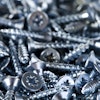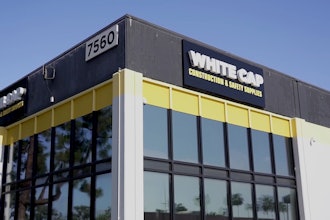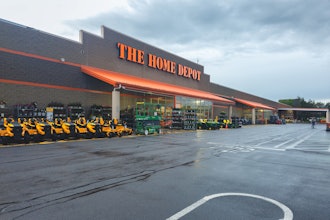WASHINGTON (AP) — The economic recovery got a lift in April as orders for large manufactured goods surged while sales of new homes benefited from homebuyer tax credits.
Manufacturing is helping drive the rebound. But some economists worry about the threat posed to U.S. exports from the widening debt crisis in Europe. And some fear that home sales will falter in coming months because the tax breaks for buyers have expired.
Still, economists found the two Commerce Department reports released Wednesday generally encouraging.
"These are very strong numbers which suggests that the second quarter started off on a very solid note," said Mark Zandi, chief economist at Moody's Analytics.
Demand for commercial aircraft lifted orders for durable goods 2.9 percent last month. That was the best showing in three months. Excluding transportation, orders fell 1 percent in April. But that came after the March figures were revised to show a 4.8 percent jump.
A separate report showed sales of new single-family homes jumped 14.8 percent in April. That gain followed a 29.8 percent surge in March, the biggest monthly increase in 47 years.
Home sales have surged this spring as buyers rushed to sign sales contracts before tax credits expired on April 30. Historically low mortgage rates also helped fuel purchases.
But sales are expected to slump in the coming months as households deal with slow job growth and tight credit. Even with sales rising, the median price of a new home tumbled last month: It dropped 9.6 percent to $198,400. That indicates continued stress in the housing market.
Manufacturing has held steady during the recovery. U.S. companies are benefiting from rising demand at home and in major export markets. But some fear the debt crisis in Europe could derail the global recovery and depress U.S. exports.
The overall economy, as measured by the gross domestic product, grew at an annual rate of 3.2 percent in the January-March quarter. Economists thinks that figure will be revised slightly higher to 3.4 percent on Thursday.
Zandi said he expected GDP growth to dip slightly to just below 3 percent in the second quarter, partly because he thinks Europe's debt problems will weigh on U.S. exports. Growth may slow further in the second half of the year to around 2.5 percent, he said.
"I believe our recovery will be strong enough to weather the storm coming from Europe, but it will be a test," Zandi said.
The rise in April orders was led by a 228 percent surge in demand for commercial aircraft, a volatile category. Boeing Co. booked orders for 34 new 777 planes, minus four cancellations. The orders included four freighters for FedEx, which has said it sees the economy improving.
Last year, Boeing cut production rates. Now, with demand rising, Boeing has said it will speed up production of the 777 as well as its large 747 next year. It will also accelerate production of the smaller 737 in 2012.
Orders for motor vehicles climbed 1.6 percent in April. Total transportation orders rose 16.1 percent.
The 1 percent drop in orders excluding transportation resulted from declines in some sectors, such as heavy machinery, that had seen big gains in March. Analysts said the slight dip is a momentary pause and not a sign of weakness.
The two months of big increases in new-home sales pushed activity to the highest level since May 2008. Sales remain well below the peaks set at the height of the housing boom.
Still, luxury homebuilder Toll Brothers Inc. posted a narrower loss in its latest quarter and saw a surge in orders for new homes. Toll's new-home contracts jumped 41 percent in the February-April period. And the value of the builder's backlog increased for the first time in years, the company said.
CEO Robert Toll said customers are becoming more confident in their job security, their ability to sell previous homes and the outlook for home prices. But he expects only a gradual recovery as homebuyers grapple with high unemployment and volatility in the financial markets.
There are indications that the surge in overall home sales has slowed this month. The number of buyers applying for a mortgage last week fell to its lowest level in 13 years, the Mortgage Bankers Association said Wednesday. The trade group's purchase index dropped 3.3 percent even as rates on 30-year fixed loans hit their lowest point of this year.
New-home sales showed strength in all areas of the country in April except the Northeast, where activity was unchanged. Sales rose 31.6 percent in the Midwest, 21.7 percent in the West and 10.8 percent in the South.


















